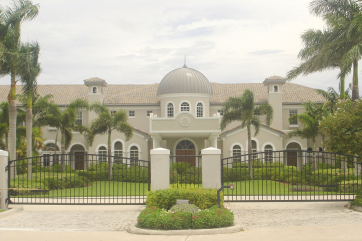Photo : Image by Nghia Le from Pixabay
English Literature saw its development after passing through a number of stages in order to appear as what we see it today. Each stage was specifically a period in the history of English Literature which facilitated the classifying of the literary texts on the periods, based upon the style of writing that flourished then.
Various research paper writings have been studied and then a proper segregation made for these literary periods. And therefore, it becomes important to understand them if one needs effective guidance.
After the Middle Ages, wherein texts were prominently based upon the religious aspects, the Renaissance engulfed the whole of England and gave it the age known as the Golden Age of Literature or the Elizabethan era. Queen Elizabeth was a great patron of literature and so during her times, flourished some of the great dramatists of all times like William Shakespeare and Christopher Marlowe.
The age marked an advent of creativity into the field of literature. Thereafter it never saw backwards. The succeeding Jacobian and the Puritan age too saw some of the most popular works like Paradise Lost by John Milton. Within no time, King Charles II was restored to the throne of England and with him came more liberty into the world of arts, particularly literature.
This marked the advent of the Neoclassical age or specifically the Restoration era in English Literature. The Neoclassical era was further divided into the ages of Dryden and Pope and did share a few common as well as a few different characteristics. Then came the Romantic era, linking itself more to the people than to the crown.
The poets write more for the understanding of the common man than to express royalty. And that is how we embarked on a journey of the advent of different ages in English Literature.
The Romantic era and the Neoclassical era were said to overlap but the former was way more different than the Neoclassical era. The subject matter and the style of writing widely varied, and the Romantics gave way to a more powerful touch with the people.
The prevailing attitude in this era favored innovation over traditionalism in the form, material and style of writing. In his preface to the Lyrical Ballads, Wordsworth clearly stresses on the importance of poetry, its existence as a spontaneous overflow of emotions that are recollected in a peaceful environment. He also talked about poetic diction being the language of the common man rather than the elite class.
Therefore, Wordsworth denounced the upper-class subjects and the poetic diction of the preceding century. His serious treatment of the lowly subject in common language went against the Neoclassic rule of decorum which stated that serious gents should deal with actions of the aristocratic characters. Wordsworth focused on establishing touch with the people therefore his subjects were very general objects that could be seen around.
Instead of writing about heaven and hell, he took to writing about daffodils that one could see around and thus draw peace from nature. He also wrote on a subject like The Solitary Reaper who is somebody whom others ignore. But Wordsworth could write at lengths on such a subject. Wordsworth concerned connecting himself to his inner self. His concern towards the basic human feelings and relations can be seen in his Tintern Abbey.
The other prominent poets who set examples in this era were Coleridge, John Keats, P. B. Shelley. Samuel Taylor Coleridge went on to further exemplify the subject matter of Romantic poetry by using his art of adding supernatural elements to his poetry and making the readers believe that in order to best appreciate a work it is important that one exercises a willing suspension of disbelief.
Coleridge exercised the use of supernatural machinery in the best possible way. His Kubla Khan and Rime of the Ancient Mariner are the best examples of this use. Research paper writings on Coleridge and his works have found out that the former was written while Coleridge was under the influence of opium and therefore, he could not finish the poem in the way he wanted to. The use of these supernatural elements took the readers to the place Coleridge wanted his readers to go.
To a great extent, nature with all its flora and fauna, became the subject matter of Romantic poetry. It was described with utmost accuracy and sensuous nuance that could not be practiced in the earlier times. The Romantics emphasized the return to nature.
Percy Bysshe Shelly took matters into hand to convey morals through his poetry. Although his poetry concerned itself with nature and its several elements at play yet it always conveyed a moral, for example, his Ode to West Wind, although talked about the destruction caused by the west wind, yet it conveyed to the readers that if bad times come then they always make way for good times- If winter comes can spring be far behind. John Keats too worked upon the basic elements of nature yet his poems were written in such a manner that they appealed to all the five senses of an individual and thus were sensuous in nature.
Lord Byron was writing during this era. He excelled in Hudibrastic verse as well as heroic couplets. He followed Alexander Pope and named him his master. Byron kept himself connected with reality and never lost touch. One of the most famous poems is '' She Walks In Beauty.
Romantic poetry made the readers relate the speaker of the poem to the poet himself. In fact, Wordsworth was greatly inspired by the French ideals of liberty, equality and fraternity and one could see a refraction of them in his poetry. Wordsworth was one such person who was widely influenced by the impacts of the French Revolution. The devastation caused by it greatly impacted him.
Therefore, this was all that we needed to know about the basics of the Romantic period and the points mentioned are sufficient enough to offer guidance to learners.
* This is a contributed article and this content does not necessarily represent the views of universityherald.com









